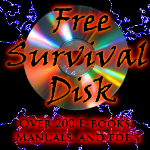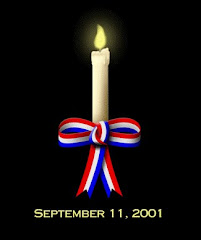The decision to evacuate or to stay and shelter-in-place is dependent on many factors. After an emergency situation occurs, the following will help you to work through most of the situations which occur in a disaster.
I. First Aid
After a disaster occurs 1st determine if there are any injuries or deaths:
(no injuries, injuries, deaths)
Next, determine if it is safe to perform First Aid:
(Safe or Not Safe - downed wires, gas leak, structural weakness or water leak)
Can and should the injured victim(s) be moved to a more secure area and can it be done safely?: (i.e. to a hospital or medical clinic)
(Yes or No)
II. Weigh the decision to Stay and Shelter-in-Place or to Evacuate based on needs:
(health, safety, shelter, warmth, water, appropriate clothing, food, communications, transportation)
III. Place "Thumbs Up" sign on front window or door:
(thumbs down -help is needed - specify the need - we are still here)
(thumbs up - Everything is ok - we are still here)
(Thumbs sideways - We are not here - We went to: address and phone)
IV. Types of disasters and reasons requiring possible Evacuation:
Church Leaders instruct their members to leave
Law Enforcement or State Emergency Services instructs you to Evacuate
Earthquake damage or tsunamis pending
Eminent Flooding, Flooding damage, Dams or levee Failure
Chemical Spill or threat
Bio Terrorism or biological threat
Explosions or Nuclear Attack or Accident; Radiation threats
Gang violence/ Mob mentality, including Looting
Pandemic Flu or other Pandemic Situations including Plagues
Severe injury or illness
Extreme weather conditions - Extreme heat, Extreme cold, Tornadoes
Disruption of infrastructure - water, electricity, sewage, gas
Downed Communications - Power Grid Blackouts
Wildfires or Volcanic Eruptions
Mud slides, Debris Flow or Avalanches
V. Procedures and Items to take with you if you decide to evacuate:
Keep all automobiles gas tanks at least half full all the time in readiness
Plan ahead for multiple directions and locations for possible evacuation
Coordinate with out-of-area and out-of-state contact family members and friends
Keep a minimum of $100 to $200 in cash available for emergencies
Pre-pack a 120 hour emergency go-kit to take with you, including water and non-perishable foods
Prepare and ready all important documents for emergency evacuation including proof of residence including deeds of trust or rental agreements, pictures of family members, copy of birth certificates, marriage certificates, passports, visas, credit cards, medical permission slips and identification and copies of insurance policies along with tax records and a current inventory
Place all genealogy and other important documents and computer backups in a readiness bag for easy removal. If there is room, bring computers with you.
Prepare a current medication list and have additional prescription medications, pet supplies, infant supplies or any other unique needs your family has for emergency on hand
Maintain a communication ability with CB radio, Amateur Radio, hand held walkie-talkies, cell phones and battery operated AM/FM radio and extra batteries for all of the above
Bring A good Family size First Aid Kit and Auto Fire Extinguisher
PAck Flashlights and extra batteries
Maps of the area, the journey and of destination area
Comfortable extra clothing and extra pairs of shoes and/or boots; extra pairs of socks, gloves and hats, scarves and breathing masks, extra blankets and sleeping bags
Extra tarps and tent(s) for shelter
Extra pairs of nylon stockings for vehicle air filters
Portable heaters and stove(s) and fuel for cooking and staying warm
Small shovel, tire chains, crowbar, rock salt and/or sand, hack saw and bow saw
Scriptures;
Reading material and games for family members, possibly including edible plants and/or survival handbooks, first aid books, seasonal weather books and gardening books, etc.
Digital Camera for documenting personal affects
Extra house keys and car keys; before you leave, lock remaining vehicles and house upon evacuation
VI. Things to do before leaving your home:
If you have not done so, as soon as possible, finish topping off your gas tanks and obtain at least 10 extra gallons of gasoline in properly designated gas cans to carry with you.
Pack as much extra food and extra water as possible to carry with you along with water filtration
Notify neighbors (if neighbors are still present) of your intent to Evacuate and give them a copy of your future location and out-of-area phone number(s) to be able to reach you
Locate a small to medium trailer to haul your water, food and emergency gear/camping gear with.
Provide a key for your neighbors to your vehicles and house in case it is a long term situation or worse, "teotwawki", so they will not need to break any windows or doors searching for additional food and water you left behind. Better yet, distribute extra food reserves to your neighbors and any family before you leave.
Be sure to shut off all water, gas and electricity to your home to prevent future possible damages
Notify your Church Leader(s)on your decision to evacuate
Monitor NOAA Weather Alert Radio for additional instructions, along with any News and Traffic Radio Stations that might be transmitting so you are aware of the best directions and routes to travel.
VII. Things to do if you decide to "weather out the situation" and "Shelter-in-Place:
Shut off all heaters and air conditioners. If it is safe, use small fans to move and circulate air within your shelter-in-place
Take plastic sheeting and close off all vents by taping them with duct tape or clear packaging tape, basically sealing off a large inner room in your home.
Shelter-in-place is normally for the short haul and not the long haul in the event of chemical, biological or radiation contamination in the area
For an extended situation, follow evacuation procedures as dictated by NOAA radio or local emergency nets broadcasting on local radio channels
Decontaminate individuals who may have been exposed by washing them completely and changing them out of contaminated clothing which should be added to a sealed plastic bag and set outside the shelter-in-place
Most shelters-in-place still have sufficient oxygen from leaking vents and should be safe


































